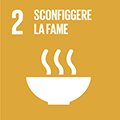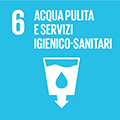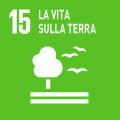- Docente: Loredana Baffoni
- Crediti formativi: 6
- SSD: AGR/16
- Lingua di insegnamento: Italiano
- Modalità didattica: Convenzionale - Lezioni in presenza
- Campus: Bologna
- Corso: Laurea in Tecnologie per il territorio e l'ambiente agro-forestale (cod. 5831)
-
dal 24/09/2024 al 10/12/2024
Conoscenze e abilità da conseguire
From this course the student will acquire knowledge on the microbial adaptation to the natural envíronments, on the methods for the microbial characterization, on the role of microorganisms on the bioremediation of the agro- forestry environmental, on the new frontiera of microbial genetic and will learn the potential applications of GM microorganisms.
Contenuti
- Introduction
- Microbial nutrition and nutritional groups
- Metabolic diversity in microorganisms (carbohydrates catabolism, pyruvate fermentation)
- Effects of the environment on growth
- Microbial associations (classification of interactions)
- Microbiology of extreme environments
- Microbial growth in laboratory and in nature (growth kinetics)
- Dynamics of microbial communities
- Preservation of microbial culture
- The soil: an environment for microorganisms
- Microbial ecology of forest soil
- Degradation of plant residues
- Laboratory techniques for environmental microbiota analysis
- Factors affecting the degradation of organic compounds
- Bioremediation strategies
- In-situ treatments of contaminated soils
- Ex-situ treatments of contaminated soils
- Advantages and Disadvantages of Bioremediation
- Metals and Their Biological Role
- Genetics and Biochemistry of Metal Resistance
- Role of microorganisms in bio-absorption of metals
- Biological treatment of wastewater
- Bacterial genetics: principles
- Plasmids, Transfer of plasmids, Properties of plasmids, Resistance plasmids, Virulence plasmids
- Transposable elements
- Organization of a genome: Chromosome Map of E. coli
- Replication Transcription and Translation in microorganisms
- Gene regulation
- Horizontal gene transfer in nature
- Microbial biotechnology and legislative aspects related to GMM application (Genetically Modified Microorganisms)
- Recombinant DNA technology and cloning vectors
- Expression vectors
- Metagenomics
- Application of GMM in the industrial field
- GMM in the food and pharmaceutical industry
- GMM for bioremediation
- Microbial Biotechnology in Agriculture
Testi/Bibliografia
Lecture notes: English and Italian version
Additional suggested books are:
- J Willey, L Sherwood, CJ Woolverton (10th edition 2017) Prescott's Microbiology Published by McGraw-Hill Education.
- JK Patra, CN Vishnuprasad, G Das (2018) Microbial Biotechnology: Applications in Agriculture and Environment Springer.
Metodi didattici
For the theoretical part, the teaching method will make use of powerpoint presentations and open discussions. The total amount of hours will be divided in: 60% lectures and 40% complementary activities (laboratory experiences, videos, seminars etc.). The aim of the complementary activities is to connect the theoretical part of the course with the practical aspects.
Modalità di verifica e valutazione dell'apprendimento
The final exam will be oral (approximately 30 minutes), three questions, one of which will be on the genetics part. Students who wish to take the exam in Italian are admitted.
Strumenti a supporto della didattica
PC, projector and blackboard are available for lessons. For complementary activities, teaching laboratories and laboratories in the microbiological area will be used
Orario di ricevimento
Consulta il sito web di Loredana Baffoni
SDGs




L'insegnamento contribuisce al perseguimento degli Obiettivi di Sviluppo Sostenibile dell'Agenda 2030 dell'ONU.
